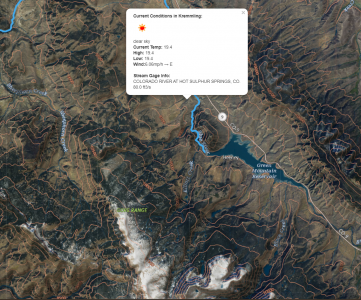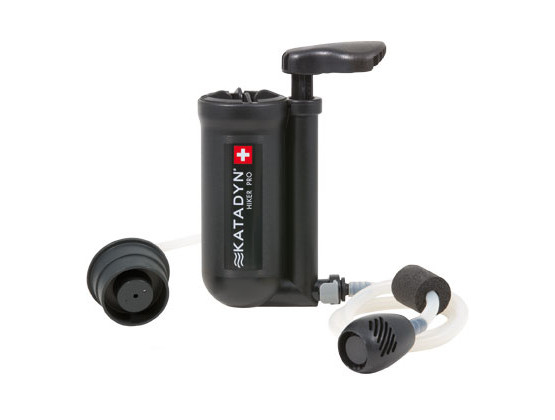If you spend any time in the backcountry you know that your phone is your lifeline to the outside world. Power conservation is a real issue when heading into the woods in today’s technology augmented outdoor experience. GPS handsets, cell phones, cameras, e-collars, and anything else you might have all require juice to run, and you’re not exactly going to be near an outlet the whole time you’re in the great outdoors!
Unless you have a GPS locator, SOS Device, or Satellite phone, you may be out of reach of the network most of the time. Take these measures in order to extend your battery and make sure that lifeline is available when you absolutely need it. Nothing in this article is going to be rocket science, but doing a few of these will greatly extend your battery life in the field.
Establish a Communication Plan
Before you leave for the wilderness, establish a communications plan with your loved ones. Figure out when you’ll be using your phone, how often that they should expect contact, and who will initiate contact. This goes a long way in order to add a little bit of predictability to when you’ll need to use your phone. Make sure your times are synchronized too, it goes a long way in establishing a communications plan back to basecamp or to loved ones across the country.
Turn Your Damn Phone Off
When you’re not using it, turn your phone off. Can’t use batteries in an excessive way if the battery is off. There may be some negligible amount of discharge if the temperature is exceedingly cold or hot. Starting a phone and stopping it frequently does drain the battery as you’re turning everything on, maximizing screen brightness, and probably running some cutesy startup video. After all part of power conservation is not using power.
Disable Wi-Fi and Bluetooth
If you’re not using it, make sure that both wireless (802.11) and Bluetooth are turned off. Otherwise your phone is constantly using those radios to search for a signal to alert you that you could associate with a device or network. Each time the phone lights up those radios you’re using valuable juice.
Turn off GPS
If you’re not actively using it for navigation, turn off your GPS. It’s one of the biggest power suckers on your phone next to the cellular radio that allows you on the cell network in the first place. Many people use their phones as a navigational aid, I can’t say I can recommend it if you’re out for longer than a day trip given power requirements and the fact that your phone should always be one of your emergency life lines.
Turn on Airplane Mode
If you need to keep your phone on, consider turning on Airplane Mode to silence all radios on the phone while still allowing the phone to function as a little computer — probably the reason other than emergencies you use it on your trip anyway!
This silences the cellular radio but allows the use of GPS, WiFi, and Bluetooth. Using a device such as a Garmin inReach Mini you can pair it with your phone over Bluetooth and fire off a message to check in. Turn off your various radios when not in use.
Enable Power Saving Mode
On Android devices a battery with a plus in the center is the indicator of the Power Saving Mode. Enabling this turns down brightness, turns off haptic feedback on typing, among other features. It’s one of the quickest ways other than airplane mode to see a quick battery life extension. Enabling it varies, but most you can pull down from the top menu and simply toggle the power saving mode by tapping that battery with the + in the center.
Limit the Use of the Camera
Taking selfies? Obsessively taking geo-tagged photos of buck scrapes to help your patterning efforts (I do)? Using your phone as a camera means that you’re using the screen as a viewfinder, causing the screen to rapidly update in real time. Unfortunately what that means is that you’re using a ton of power in doing so, from activating the camera sensor to piping all of that data to the screen and then running computations on what should be focused on based off of what the camera sensor is seeing. All computationally expensive and a giant suck of power from your ties to the outside world. I’m not saying to not record your adventures, but consider carrying a small point and shoot if battery life is precious.
Future so Bright…
Most folks have an extremely bright screen most of the time. Consider turning down your screen brightness to the minimum to function. Minimizing the back lighting gives the phone one less thing to throw power at when you’re using it. You can always crank the brightness intermittently when you need to use it in an overly bright area, or find a patch of shade.
Use a Battery Pack
Ready to take all of my previous advice and just wing it out the proverbial window? Get something like a GoalZero battery pack and keep it topped off and with you. This is more of a cheat in just bringing yet another device rather than extending your existing device’s batteries. My GoalZero Flip 30 gets 2.5 – 3 phone charges before its battery dies. This allows me to use the camera quite a bit on my phone during extended outings.
Keep your batteries warm
Starting your phone in extremely cold temperatures makes the battery life go to near zero. Keep your batteries near your body in an internal pocket before you intend on using them. In the evening consider putting batteries in your sleeping bag in the bottom overnight. You did buy a long sleeping bag, right?
Be a Mooch
This should probably go without saying but top off your batteries before you get to the trailhead. Charge your phone, GPS handset, battery pack in the car on the way or have fresh batteries in them. If you stop for lunch, or you’re changing camps and come into civilization see if you can’t mooch some power to get your batteries charged.
In theory you can also mooch off the sun, we intend on testing a GoalZero solar panel or similar device this spring for some hiking and camping adventures. Every year solar technology becomes cheaper and more efficient.
Hopefully by following some of the tips above you can extend your battery life, and your adventures afield. As we add more gear to the APT Outdoors gear room, look for more reviews on technology to take on your next trip out in the woods or on the water.








